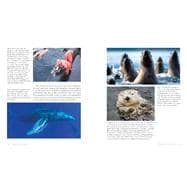
| Acknowledgments | |
| Foreword | |
| Introduction | |
| What Lived in the Ocean? | |
| The Known, the Unknown and the Unknowable | |
| The Great Unknown | |
| The Census of Marine Life | |
| Painting a Picture of the Past | |
| What Once Lived in the Ocean | |
| Records of Decline | |
| In Quest of a Zero-Year Baseline | |
| Managing the Fisheries | |
| Charting a New Course of Study | |
| What Lives in the Ocean? | |
| Expanding the Use of Technology | |
| Reaching the Research Sites | |
| Using Sound to "See" Under Water | |
| Advances in Optical Technology | |
| Collecting Specimens | |
| Studying the Movements of Marine Life | |
| Identifying the Collected Species | |
| Census Data Available to the World | |
| Animals as Ocean Observers | |
| Developments in Tagging | |
| Facing Extremes | |
| Disappearing Ice Oceans | |
| Uncovering Hidden Oceans | |
| Surprises in the Southern Ocean | |
| Opening Windows of Knowledge | |
| Unexpected Diversity at the Edges of the Sea | |
| Coral Reefs in the Northwest Hawaiian Islands | |
| The Gulf of Maine: Past and Present | |
| A New Habitat for Alaska | |
| The Way Forward | |
| Unexplored Ecosystems: Vents, Seeps, Seamounts and Abyssal Plains | |
| Hydrothermal Vents | |
| Continental Margins and Cold-Water Seeps | |
| Seamounts | |
| Abyssal Plains | |
| Unraveling the Mystery of New Life-Forms | |
| The Name Game | |
| Identifying the Drifters | |
| Where No One Has Gone Before | |
| A Window Below the Ice | |
| Eyes and Ears in the Deep | |
| Visualizing the Invisible | |
| Looking Ahead | |
| What Will Live in the Ocean? | |
| Forecasting the Future | |
| The Demise of the Great Sharks | |
| Changes in Fisheries Practice Help Whales | |
| The Path Forward | |
| The Census Has Made a Difference | |
| Glossary | |
| Further Reading | |
| Photo Credits | |
| Index | |
| Table of Contents provided by Publisher. All Rights Reserved. |
The New copy of this book will include any supplemental materials advertised. Please check the title of the book to determine if it should include any access cards, study guides, lab manuals, CDs, etc.
The Used, Rental and eBook copies of this book are not guaranteed to include any supplemental materials. Typically, only the book itself is included. This is true even if the title states it includes any access cards, study guides, lab manuals, CDs, etc.